Compact saturated green bush "Beauty - Tradessication" will bloom throughout the warm season, if it is properly to care for the plant and know the secrets of its cultivation in the open soil.
And although, the familiar to our regions, the tradesbanation is a room flower, a garden species is no less popular among the flower water.
Having worn, cold-resistant, resistant to diseases and unpretentious culture requires a minimum of attention and is suitable for growing even beginners - lovers. Experienced landscape designers have long been "noticed" spectacular abundant flowering bushes and use them for the design of suitable gardening zones or flower beds.
All the subtleties of landing and care for decorative perennial are in this selection of material.
Tradestration garden long-term, description of the plant
Perennial Tradesska - evergreen grassy culture from the family of commeline. Most species belong to decorative room plants.
- Garden tradescania - the genus of thermal-loving unpretentious plants, some varieties of which, successfully grown not only at home, but also in the open soil.
- The name of the perennial assigned the famous botanist Karl Linney in honor of travelers and naturalists, father and son on the surname Tradescant. It was they who first brought culture to Europe from Virginia (Virginia), the eastern state of America. In this regard, the flower toldesania is often called "Virgin". Another name is "TRONESCHANCE ANDERSON", associated with the name of the American botany, which created hybrid forms of many years of culture.
- In the wild, the Tradescania is found in the moderate and tropical climate of America, Argentina and Canada. Unsessiveness and plasticity of the plant allowed him to quickly adapt to the climatic conditions of the moderate zone of Europe and Asia. Culture is able to grow in one place for more than 10 years.
- The plant has a kind of low (about half a meter) of lush coucasting with many leaves and small elegant flowers of white, purple, pink or blue colors. Moreover, the shades of flowers may vary depending on the lighting, the quality of the soil and place of growth.
- Numerous delicate and nodular shoots of decorative tradescania can be straight or running (soil).
- The leaves of the plant are narrow, as a rule, a rich green color, an elongated lanceal form, with another location. There are varieties of tradesansans with a yellow, purple or nasy tinge of foliage.
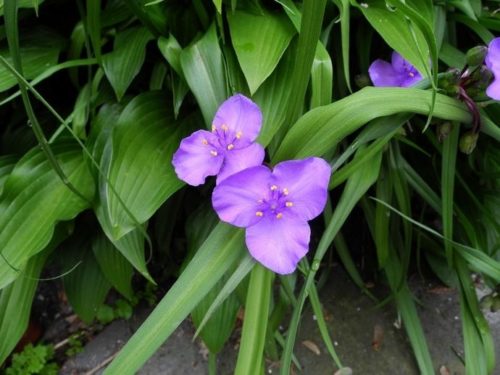
- Perennial roots - urine and thickened.
- Lush bright inflorescences are placed on top of flowers or in the top leaf sinuses. Flowers of small sizes, up to 5 cm in diameter, with 3 large petals surrounded by bracts. High decorative and brightly colored stamens often create the effect of the creation of inflorescences. Separately taken tradescania flower lives no longer than a day, at the same time, a bush of perennial throughout the warm season is decorated with constantly blooming umbrella inflorescences or buds. This is explained by the alternateness and continuity of the flowering process, replacing all new and new inflorescences.
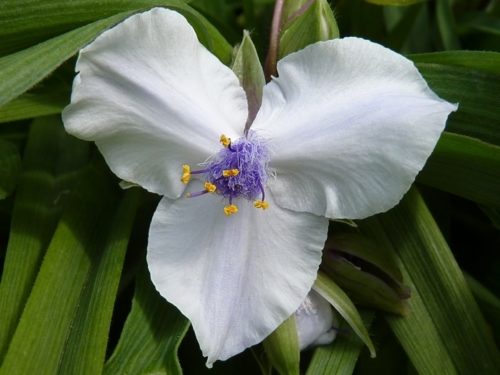
- Such an unusually long period of flowering, beginning in the end of spring and lasting to the most frosts - is one of the main advantages of decorative perennial grass. It is noteworthy that there is never visible on the shrub that there is never visible shrinking or drying flowers, because the petals after flowering turn into a "jelly" and resemble more non-scratch buds. This feature significantly improves the decorative qualities of the plant.
- Fruits in the form of a thin-walled box are opened by two halves and contain small seeds. In rainy weather, the inflorescence of the tradescania "hide" inside the bush, wrapped in seed boxes.
- In addition to its attractive appearance, the street garden tradescation is distinguished by endurance and unpretentious care, which allowed her to take a solid position of the decorative ground plant. Prolonged abundant flowering of perennials make it a real decoration of any flower beds, a mixboarder, the coast of the reservoir or the preservation.
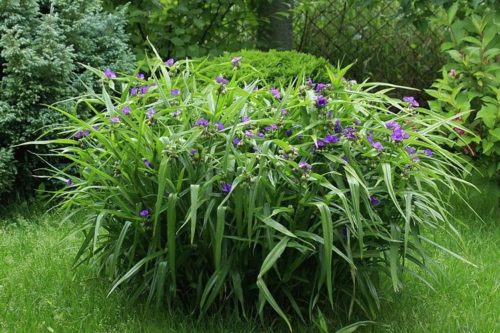
TRONESCTION Garden: Useful properties
In addition to his straight, decorative, destination - the tradescantia also has other useful properties.
- Garden tradescania is recognized as an effective medicinal plant. The foliage of the perennial contains active substances of the antibacterial spectrum of action. The grass helps to treat colds, beneficially affecting the respiratory organs. The leaf decoction without difficulty copes with a protracted runny nose and a cough, helps with colitis and inflammation of the gastrointestinal tract, fresh leaflets are a separate element with a complex treatment of periodontal treatment, effectively stop bleeding and healing wounds, incl. and furuncula.
- Although the perennial flowers do not exude a strong flavor, the plant is an excellent honey. And given the duration and abundance of flowering period, garden tradescans serve as reliable assistants for beekeepers.
- Scientific research of botany confirm that the culture is capable of purifying air, moisturizing it and neutralizing the negative effects of electromagnetic radiation.
- Tracdish flowers garden - a popular aesthetic plant used in garden design and decorative flower compositions.
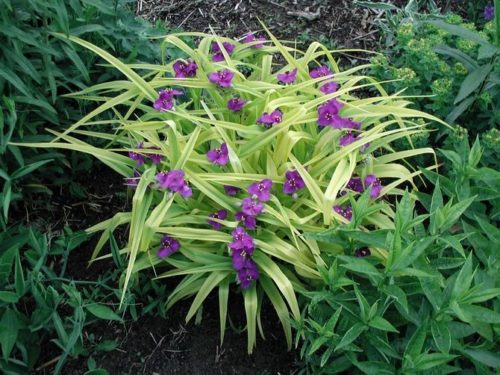
TRONESCTION Garden, species and varieties
Of the not tropical species of garden beauties, the most famous Tradesania Virginskaya is known. It was based on this species that most varieties of the dust form of flower perennial were derived. All hybrid sorts of garden culture conventionally combine into the group called "Anderson Tradesska". In fact, both plants names are synonymous and do not have any clear differences.
Between themselves, the varieties differ in the color of the petals and the flower stamens, a tint of leaves and stems, the presence of omission, the height of the bush and a period of flowering.
Consider the most popular in flower growing species and varieties of tradescania garden.
- Tradesska Virginskaya (T. Virginiana).
An herbaceous flowering plant, a height of 30 to 80 cm. The length of the color lines on dense or loose bushes, reaches no more than 4 cm. Coloring flowers pink or blue, sometimes there are white painted inflorescences.
The perennial prefers fertile loose and moistened soil. Culture is well tolerating drought, frost-resistant and not demanding to lighting. This type of tradescania is widespread in Russia.
The most commonly cultivated such varieties of Tracdania Virgin: var. Coerulea (flowers of gently blue color), var. Rubra, Var. Atrorubra (Rubyovo Red Flowers), Var. Rosea (pink flowers).
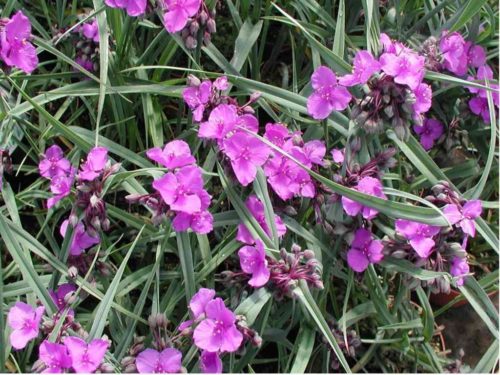
Popular hybrid varieties are also varieties of TRondessancy Anderson: "Pearl", "Fairy", "Pink Chables", "Innocence", "Caerulea Plena", "Angel Eyes".
The original colorful cups and petals are distinguished by hybrid grades of garden trading: "jgweguelin" (blue large flowers on purple flowers), "Iris" (blue flowers), "Bilberry Ice" (raspberry flowers, with white edging), "Blue and Gold" (Violet flowers and golden stems), "Blue Stone" (blue corrugated flowers), "Concord Grape" (raspberry-purple flowers and sisaya foliage), "Osprey" (large white flowers with wavy petals), "Pink Chables" (pink Flowers with white border), "Purple Profusion" rounded bush with purple flowers), "Annie" (raspberry, slightly corrugated flowers).
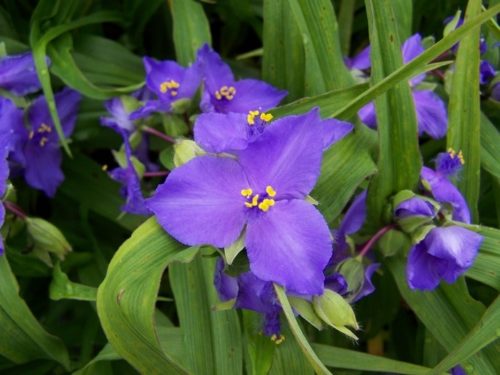
- Tradestration giant (T. Gigantea).
Prefers rocky soil, grows in Texas. The low bush (up to 40 cm) is distinguished by the terry chips of the cups and wide leaves.
- Tradestration long-hall (T. Longipes).
Little view with stem up to 10 cm and short bluers. Pink or blue flowers. Unpretentious and hardy plant, with high drought-resistant qualities.
- Tradestration Western (T. Occidentalis).
View with narrow smooth leaves and flowers of pink or blue shades. Busty, about 60 cm height is found in America and Mexico.
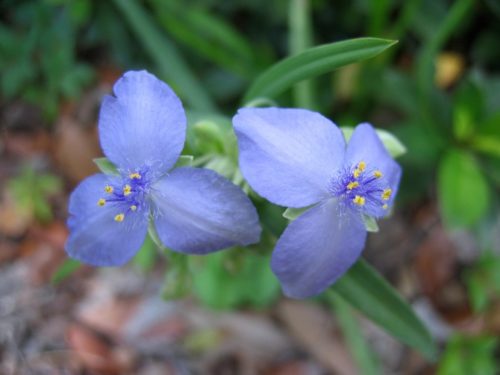
- Ohayskaya Tradesska (T. Ohiensis).
A tall view (up to 120 cm) is distinguished by the presence of a light (whiten) plaque on the stem and leaves. Short patterns reach no more than 3 cm. Inflorescences of pink, blue and, less often, white (with blue stamens).
- Tracker Bract (T. Bracteata).
The plant forms compact bushes, up to 60 cm high, with smooth stems and flooded florals. Chassels are also covered with hairs. Blue or pink flowers.
- Subaspera Tradesska (T. Subaspera).
The thermal-loving view of the southern states of America. Remarkable zigzag stems that are added to a height of up to 1 meter. Blue flowers.
- Tradesska Ernestian (T. Ernestiana).
View, with saturated violet flowers, blooms in spring time. The height of the bush can reach 100 cm.
TRONESCTION Garden, agricultural landing
The cultivation of the TRADESCTION SADOVO does not require special knowledge or skills. The flower is relatively unpretentious to the conditions of growth, it is easily caring in a new place and requires a minimum of attention.
Given that a perennial plant can grow in one place (without transplantation) more than a decade, special attention should be paid to the right choice of space for landing.
Place for landing of Irajesans
- Moofly loving Tradesska prefers protected, moderately illuminated, land plots.
- An ideal place for landing the Tracdiskaration Sadovaya will not be very open, located in the half and near the reservoir, the plot. Too sunny terrain will pernicably affect the development of a moisthed culture: the plant will first stop blossoming, and then driving at all. Excessive shadow is also not desirable, since under similar conditions, flowering may not come at all. In addition, the tradescania badly tolerates drafts and gusty winds.
- The most advantageous place of growing flower culture and a pledge of long abundant flowering, there will be a plot lit by the sun in the morning and in the evening, but stentered (by other plants or buildings) in a sultry noon. An alternative can also be a plot with scattered lighting throughout the day.
- Lounged, on the sunny dry area, the Tradesska needs regular and abundant irrigation. Otherwise, the development of the plant slows down significantly either fully stops.
- It is also not desirable too close. So, while sitting down the tracks for the coastal zone of reservoirs, you should retreat from the edge of the water and put it a little further.
- The soil must be light, nutritious, loose, with a weakly acidic medium reaction. The optimal option is a moistened fertile soil with a high content of organics. Air-permeable soil should include a turf and leafy ground, sand and humus.
Landing tradescania sadois
- Looking down the perennial can be seeds, decens or rooted cuttings. It is better to do it in early spring or, in the case of a decene, - in the fall. The plant lined with seeds will bloom only for the 3rd year of life.
- Before boarding, the site should be prepared: Clear from weeding grass, explode, deposit organic substances. In the case of scanty, dense and depleted humus, the soil practices a complete removal of the upper layer of the Earth with the subsequent laying of high-quality structural soil.
- A vermicompost (biohumus), peat, humus, is used as organic fertilizers. Landing soil, mixed with organica, is ready for use and planting plants.
- Hutting the tracks, prepare small pits or grooves. In the wells, with a fertile soil, plant plant, vertically holding a bush. At the same time, at the bottom of the yamek, it is necessary to accurately straighten the roots and gradually, sinking and sealing soil, fall asleep roots to the root cervical level.
- With proper landing, the root neck must be 2-3 cm below the ground level.
- After planting a garden trading, the plant is watered, and the rolling circle is mounted peat or humus.
- If before sitting down the tracks to open soil, the plant was in other conditions (in the greenhouse, on the windowsill), should help him adapt to new conditions and reduce the stressful impact of the environment. For this, the seedling is covered for several days with a special nonwoven underfloor material that prevents the penetration of direct sunlight. After 2-3 days, when the plant is completely rooted, the shelter is removed.
Garden Tradesska, Care Features
The long-term tradescania needs conventional care, which includes watering, loosening the site, making feeding and measures to combat diseases or pests.
The only distinctive feature of the cultivation of decorative culture is the autumn trimming of bushes and the periodic removal of flashing flowers and flowers for stimulating new, even more abundant. In addition, the removal of the flooded parts of the plant warns the possible unwanted peremnye perekomov, and the blooming bush will look decorative and well-groomed all the time.
Otherwise, agricultural techniques are practically no different from conventional plants care workers.
Watering and loosening of the Tracdisania Sadovaya
- Moofly loving tradescania in the summer prefers constantly moderately wet soil. This means that watering the plant is necessary regularly and abundantly.
- In the hot and dry period, the flower products are recommended to spray the green mass of the tradescania from the sprayer. For these purposes, it is better to use the collected rainwater, and the spraying itself is carried out in the evening. Sprinkling plants in a hot day period can lead to formation on the leaves of sunburn.
- In the autumn, on the eve of winter cold, the watering of garden tradesans is reduced, and then completely stop.
- The lack of moisture leads to slow growth and the development of many years of culture. The plant ceases to bloom and, ultimately, may die.
- Throughout the growing season, the site around the plants should be loosened and in time to remove weary grass.
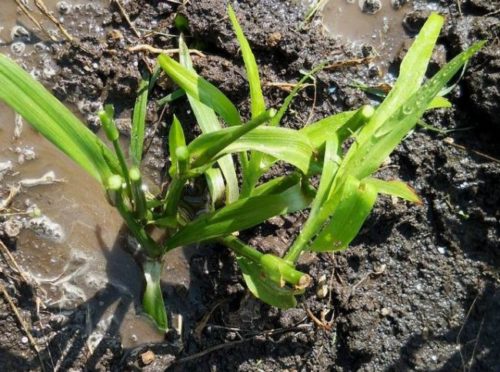
Making fertilizers for TRADESCOTION SADOVO
- The feeding favorably affects the development of garden trading bushes, contributes to a longer and massive flowering.
- The first feeding is carried out early in spring, before the start of the active growing period. For this, complex mineral fertilizers are made according to the type "Kemira", "Azophoska", Nitroammofoska, intended for flowering cultures.
- The second feeding comes from the period of bootonization, before the start of flowering. Used liquid nitrogen-containing complexes, type urea or ammonium nitrate.
- In the fall, closed by humus, the soil will receive additional nutrition in the form of organic.
- If the tradescania landed in initially fertile and nutritious soil, the introduction of additional fertilizers is not required for the first 1-2 years.
- The introduction of any fertilizers is better to exercise in the evening or early in the morning, preferably in cloudy weather.
Fighting diseases and pests of TRONESCTION SADOVO
- Garden tradescation - highly resistant to disease and pests, plant. As a rule, culture does not need additional protective or preventive measures.
- Occasionally, unmatodes or nematodes attracted by a wet plant growing can harm the perennials. When the bush is infected with microchildren - nematodes, it is necessary to completely cut the ground green part and destroy it (better burn). To scare the pests from landing sites, flower products recommend landing near aromatic velvets, mustard or cress salad.
- In the arid period, beetles - bronze. In the fight against undesirable "guests", it is used mainly to manually collect insect pests and spraying with the infusion of fragrant herbs (pizzy, garlic, wormwood, etc.).
Wintering and trimming of a garden
- Do I need to cut the tracks for gardening and when to do it? Indeed, at the end of autumn, the ground part of the perennial must be cut off, preparing a plant for the upcoming winter.
- Before wintering, the ground around the perennial is better to climb peat, moss or humus to avoid possible feeding roots. Especially this technique is relevant for regions with cold and low winter winters.
- Climatic zones with a temperate and warm climate in a special shelter of garden tradesans do not need. But in the cold and harsh regions, the tradescantia needs to be covered with a plastic film or other material (snapshot, dry leaves).
- Especially susceptible to low temperatures, young and faster tradescania seedlings. They must be in obligatory to be stolen by winter or mulch the thick layer of mulch.
- Sometimes in the spring, the tradescania is in no hurry to "wake up" after the winter, but you do not need to hurry to remove lifeless, at first glance, the rest of the bushes. After a while, the perennial will release young shoots and begin to actively increase the green mass.
Tracing Sadovania Tracker
- In the case when the bush is too high, thick and spread, and the shoots are thrown into the ground, the tradeskania needs a garter.
- For tall varieties initially (when landing) prepare supports for tapping bushes.
TRONESCTION Garden, methods of breeding
The tradescania is multiplied with seed and vegetative (the division of the bush, stalling) in ways.
- The seed method of breeding, as is known, is not able to preserve the varietal signs of the plant. The method is widely used by breeders to remove new varieties. Seying seeds is better in winter, in the spring to make the pickup seedlings. Spring seed sowing is also practiced. As a rule, seeds are sown in containers with light soil with a mixture and lower drainage layer. Seed landing is carried out shallow, up to 2 cm, after which the container is covered with a film, forming a greenhouse, or placed in greenhouse conditions (with a temperature of about 24 0WITH). Provide seeds of moisture better from the sprayer so that they do not float during watering, and the hard crust on the surface of the soil did not form. Care for seedlings includes regular moistening, feeding with complex fertilizers and loosening. Seedlings in the phase of 2-3 leaves are picked in an open ground. Tradestration, landed by seeds blooms for the 3rd year of life.
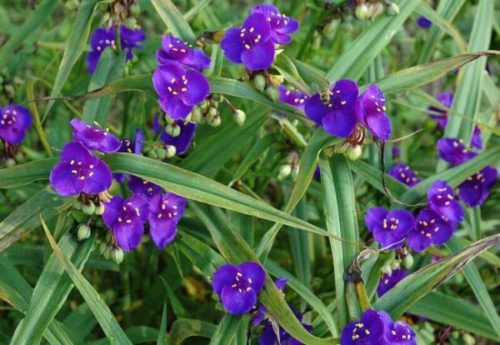
- For reproduction with cuttings, cut the tops of shoots (with several interstices) are placed on a few days per wet sand substrate (or water container) for rooting. Moreover, the lower leaves of cuttings are removed in advance. Then, the cuttings with the recessed roots are planted either in the container (for growing), or in the proplinated flower bed. The soil for planting should be loose and easy, for example, of a delicate and leaf land with sand. 1-2 months, with good care (moderate regular watering and temperature 22-24 0C), the plant will already have a completely decorative appearance. Cooking cuttings follows in spring or summer so that they manage to root and grow up to winter cold weather.
- To divide the bush, in the spring adult, the bush is divided into several parts, trying to injure the lunged roots as little as possible. Sometimes, flowerflows do without complete digging, simply separating the shovel part of the transportation bush. Transplanting Tradescania Sadovaya will not deliver a lot of Labor: Dellets are easily and quickly coming up in a new place. This method of reproduction of perennial is considered the most common and simple. In addition, such a tradescation blooms after 2-3 months after landing. And such rejuvenation of an adult shrub will be only advantageous: the plant is "rapid" and blooms with a new force.
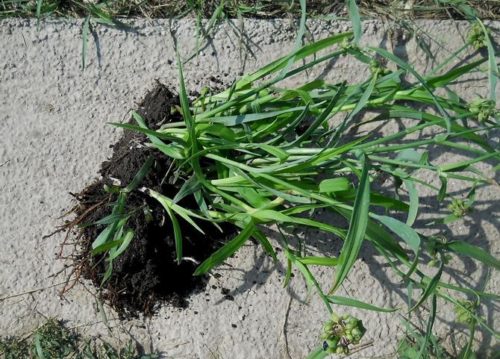
Garden Tradestation in Landscape Design
- Decorative long blooming perennial has long been used by landscaped designers for the design of flower, creating flower arrangements, decorating the coastal zone of the reservoir, etc.
- Tradestration garden looks great with other colors, shrubs and grassy plants. When drawing up decorative compositions, it is important to take into account the height of the plants so that they do not close, but complemented each other. The most successful combinations of aesthetic tradescania with ferns, geihans, loyabers, hosts and astilbami are most successful.
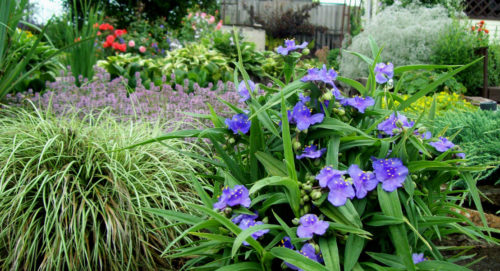
- Given the preferences of many years of culture, it is planted in privided mixlets, in the lowlands of the Alpine slides, in fences or in the shade of any buildings. Successfully selected place will provide the owners of garden beauty. Bright greens and an abundance of gentle flowers throughout the warm season.
- When choosing a variety of tradesansans, it should be remembered about the possible seasoning of tall-sized tradesansans (especially in open and unprotected areas), which will significantly worsen the decorative attractiveness of the flower bed. In this case, successfully selected "neighbors - plants" will be able to become a real natural support for the spacious bushes of the Tradesska.
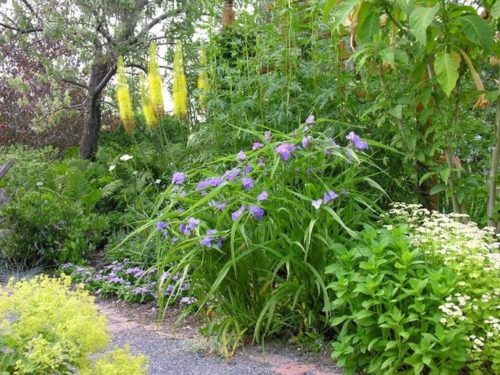
Summing up, we note that garden tradescation is a hardy and unpretentious plant grown in the open soil. Among the main requirements of successful cultivation of many years and long blooming beauty - constantly moistened soil and scattered lighting. Separation and transplantation (every 5 years) The specking shrub of the traditional system ensures the rejuvenation of the plant, at times amplifying the flowering intensity. Bright and decorative culture is not replaceable when making many landscape designs, in particular, when drafting a variety of flower compositions.


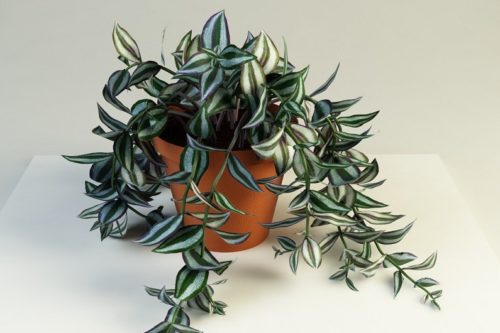
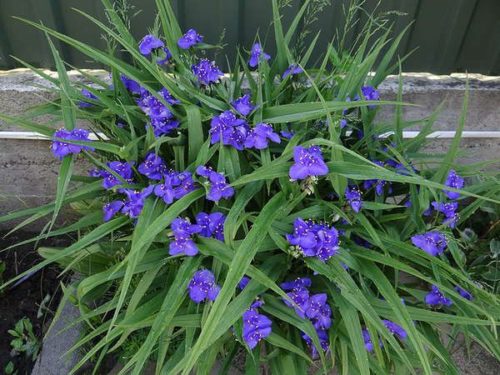
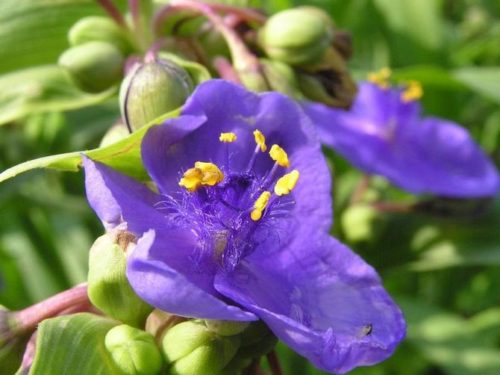
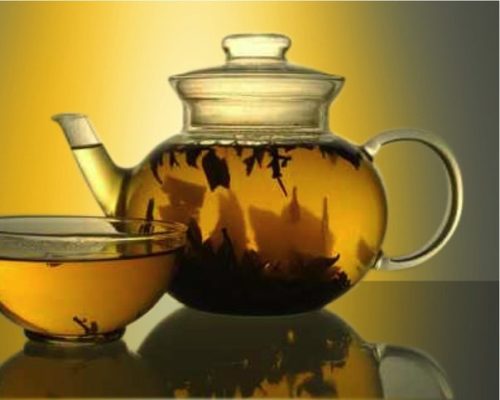
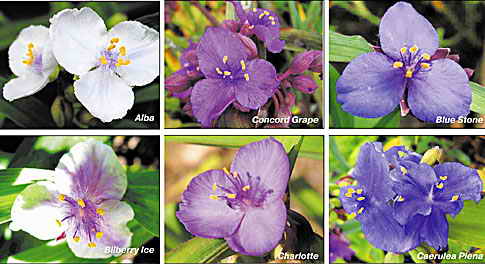
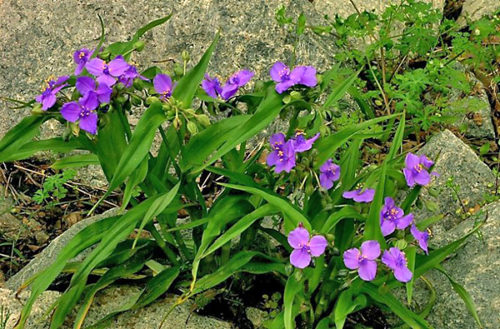
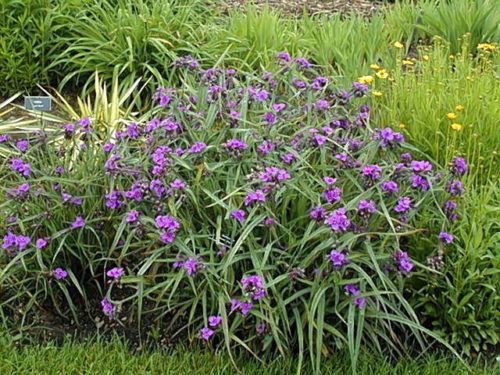

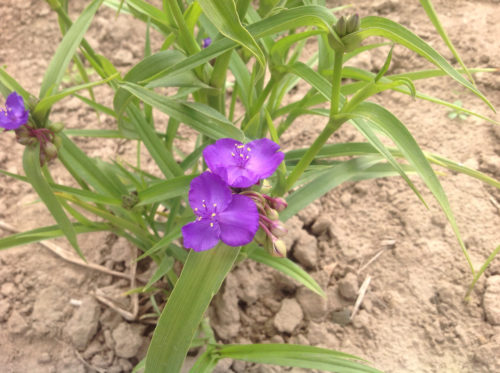
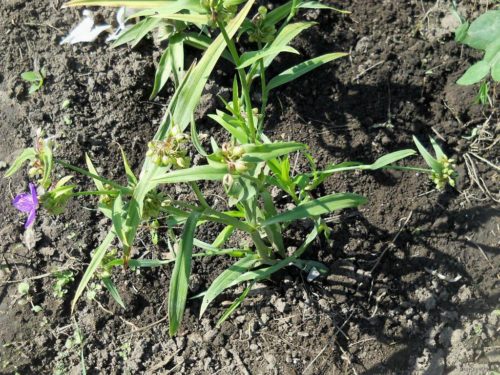
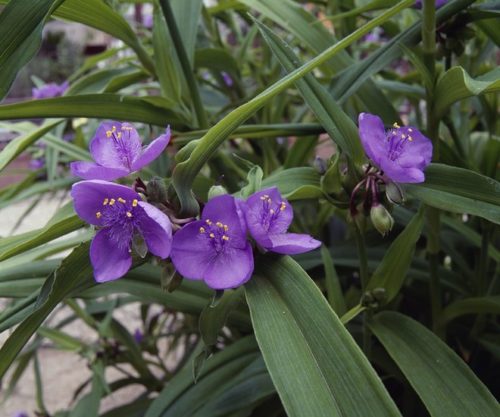
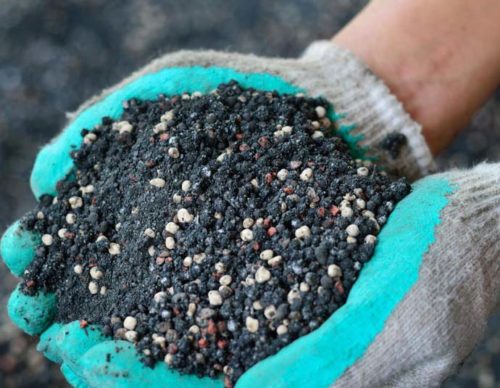
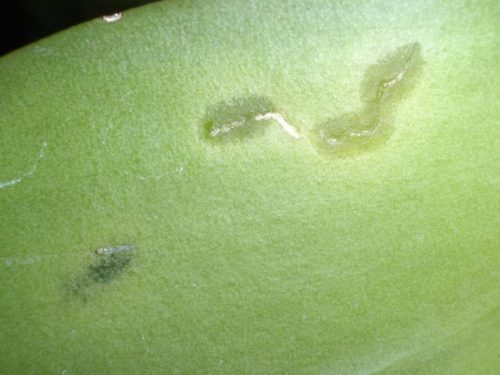
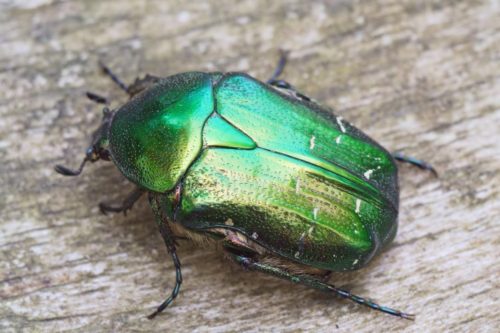
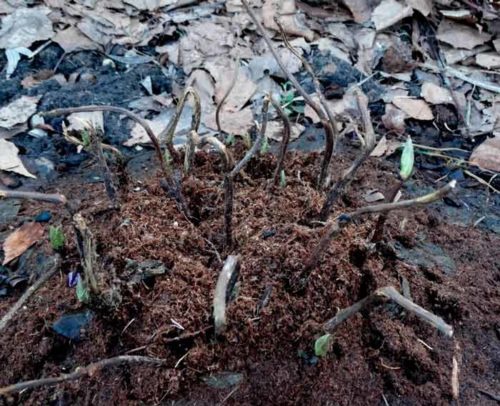
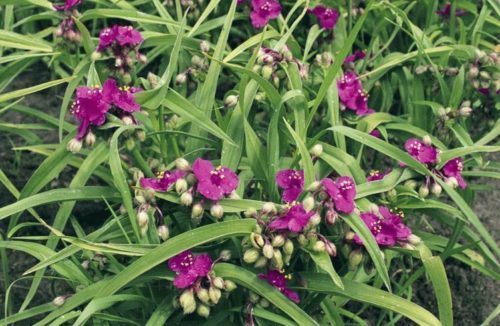
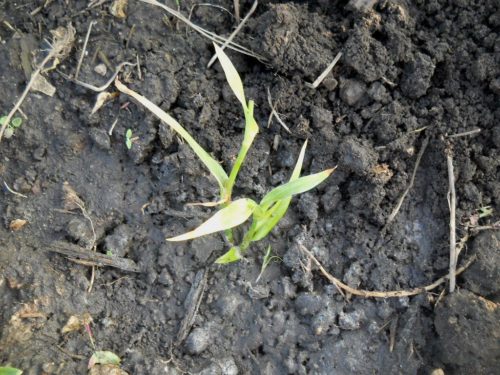
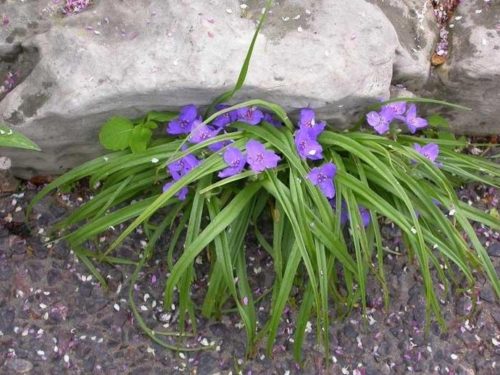
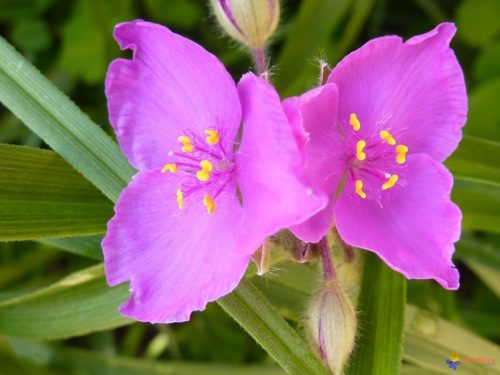
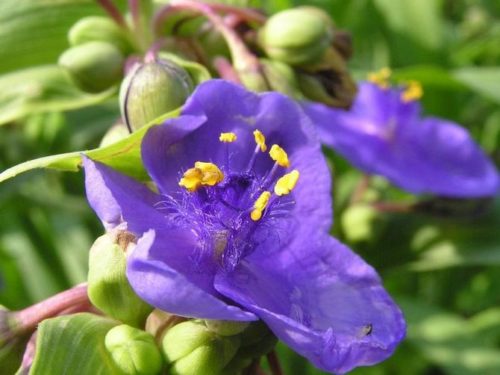
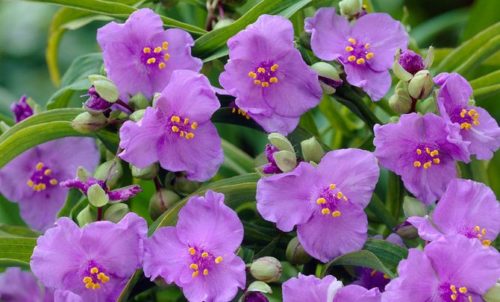
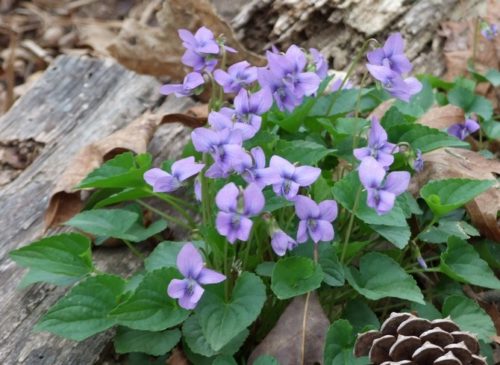












 Start a discussion ...
Start a discussion ...